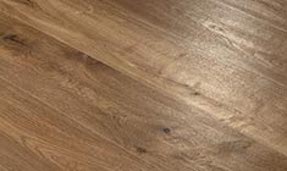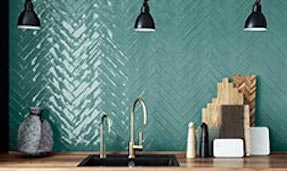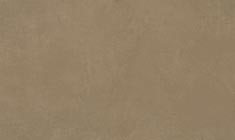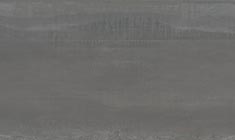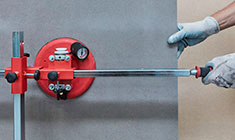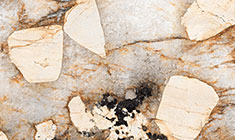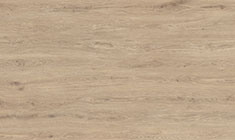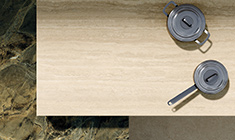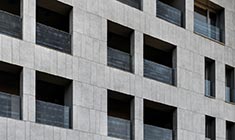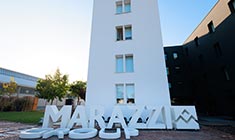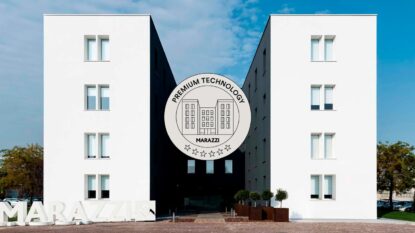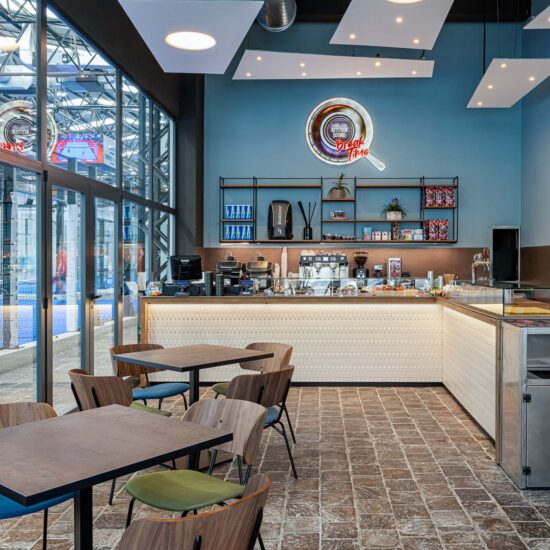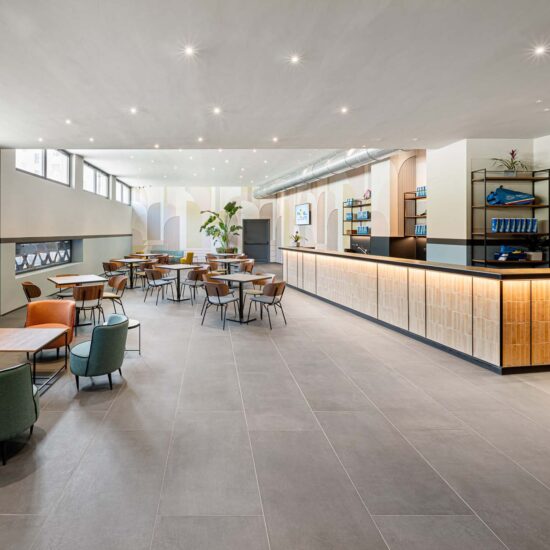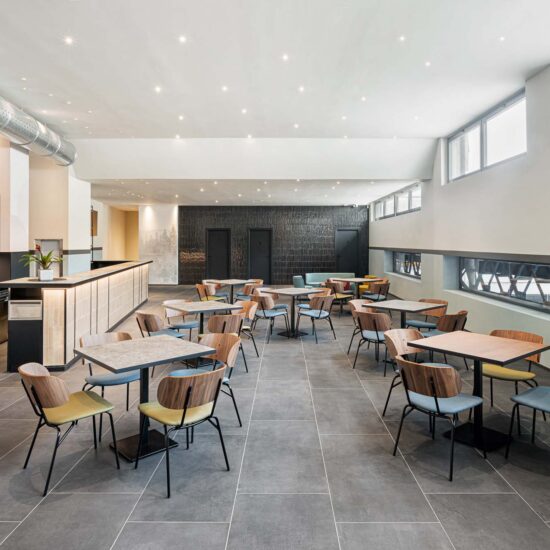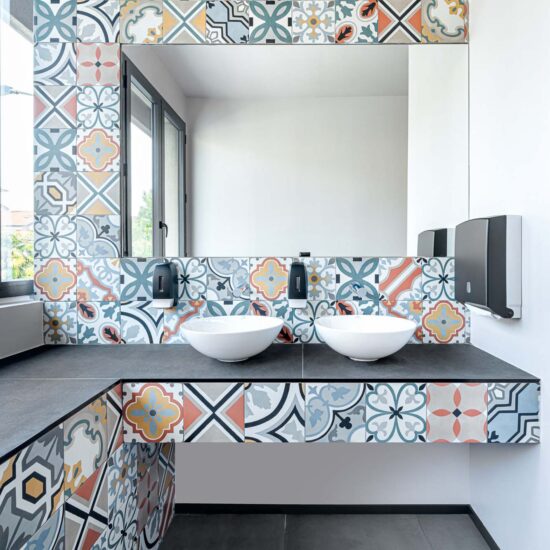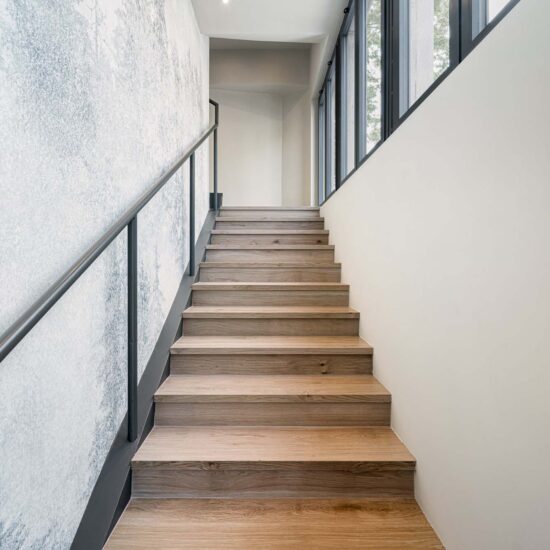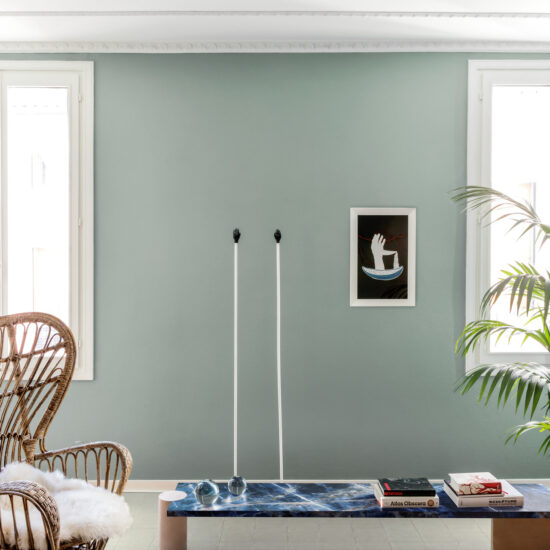
Designers
Alfredo Canelli
Categories
Hotel and catering, hospitality and leisureAt the Padel Palace sports club and bistro ceramics are widely used, from the coverings of the counters to the tabletops and from the material-effect walls to the floors, exploiting the many looks and sizes available
An industrial building in north-east Milan, initially a factory making central heating boilers and home to a junk dealer, now houses Padel Palace, an indoor sports club with bistro run by Food Media Factory, the company headed by celebrity chef Alessandro Borghese. The project for the location is by Alfredo Canelli, who also designed the famous chef’s Milan and Venice restaurants. “It’s a place that offers freedom, relaxation, leisure and affordable, quality cuisine,” the architect states. “We set out to create a pop aesthetic to create an unpretentious, absolutely informal ambience. Instead of direct reference to padel or the colours of the sports area, we opted for a general sense of fun and repetitive geometrical forms that could evoke padel courts. We’ve already worked with Marazzi in the Venice restaurant, experimenting with large-scale use of ceramics and the many sizes and collections available. We want these projects to give visibility to Italian products with low environmental impact and a high recycled material content. And we choose to work with companies like Marazzi, that share our values, and enable us to try out the potentials of ceramics in the most widely varying applications”.
The ground floor bar is an informal room with large windows overlooking the courts. Its focal point is the large L-shaped counter, which recalls those of traditional bars with their display cases and their food on show. The front of the counter is covered with pale-coloured tiles from the Crogiolo Confetto collection in 5x15 cm size with the Savoiardo three-dimensional structure, which combines with the lighting that rakes the whole surface to generate an effect of depth and alternating light and shadow. The Top Metal Look in Corten finish (160x320 cm 6 mm and 162x324 cm 12 mm sizes), used on the countertop, the walls behind the counter and also the tops of the tables, which match the walls, provides a strong contrast with the counter front.
The stairs, covered with Treverkmust 25x150 cm wood-effect planks, lead to the ABKS Break Time bistro. “We decided against referencing the location’s industrial identity with the usual bare concrete in a “raw” space concept. Instead, we opted for an understated, discreet elegance, defined by the colours and textures of the materials,” Alfredo Canelli continued. The dining-room flooring is in dark concrete-effect porcelain stoneware (Cementum collection, 60x120 cm) to dialogue with the original context, from which we retained the industrial air ducts and the tall ribbon windows. The upper floor also includes a wide counter, straight in this case and covered with Lume small-size tiles from the Crogiolo range, in an iridescent pink colour. To highlight the pink of the counter’s front tiling and the stippled grey background of its top (The Top Stone Look collection, Gris du Gent colour), square Powder Graphite slabs (60x60 cm) were installed behind it. “We wanted to focus on the material effect, without interfering with the interior’s overall simplicity,” Mr Canelli added. All this clever use of surfaces and colours recurs in the tabletops.
In the professional kitchen, functional performance has to be the main consideration. The floor is covered with the Stream anti-slip collection, inspired by natural stones and in a pale colour, which combines a touch of beauty with the easy cleaning and hygiene typical of ceramic products.
The wall at the entrance to the toilets is completely covered with black tiles from the Lume collection, creating a glossy backdrop that reflects the natural daylight which rakes the tiles from above. But the surprise comes in the lavish, playful use of the many decors of the Crogiolo D_Segni Colore collection (20x20 cm size) which, while evoking traditional cement tiles, here constitute a kaleidoscope of decorative patterns. “One curious fact”, Mr Canelli revealed: “the tiles’ layout conceals a code - the scores of the final and semifinal matches at the last three padel world championships”.
Ph. Saverio Lombardi Vallauri
Project gallery
Explore project collections

